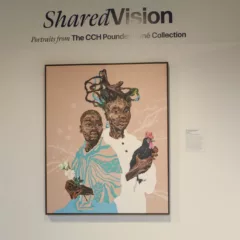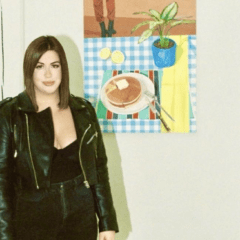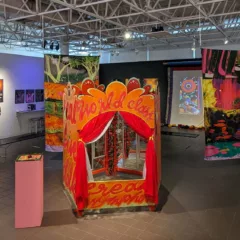We Are Not Special In This World
By Magdalene Sanchez
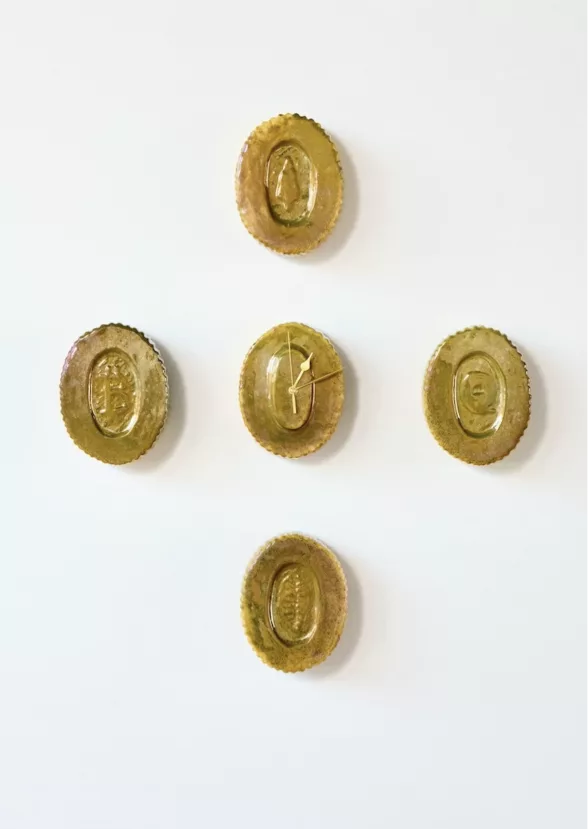
Ceramics” (2024), glazed earthenware. Photo by Alexander Masour, Courtesy of The Clay Studio
Sunlight streams through windows and illuminates the gallery space in The Clay Studio, where Liisa Nelson‘s show Dreams resides. Opposite the windows, a free-standing painted-cloud wall scattered with ceramic tiles and sculptures offers a gentle counterpoint to the overwhelm of 2025’s stress, both digital and political. Nelson integrates these small sculptures into playful relics of our current moment; exploring themes of mythology, belief systems, and digital spaces, creating links between ancient traditions and modern issues. In doing so, she reflects on how identity, consumerism, and societal change are interconnected.
Nelson’s work invites reflection on how deep-rooted belief systems and consumerism continue to influence our lives. In the piece titled “I Need More Than Just Check to Check to Get Free Ceramics,” we are presented with a clock that does not tell time and yet still cordons it off with forms resembling gold coins. The viewer is encouraged to question the overlap between time, money, and artwork. How can an artist make artwork on a strict timeline and survive in a society that demands results? Although historically linked to trade and craftsmanship, ceramics today serve as commodities within the artistic marketplace.
But these ceramics are lasting objects that encourage us to reflect on our shared stories through the use of media references. They remind us that physical materials nourish our need for human connection, even amidst the fleeting nature of the online world and the fast pace of transformation.
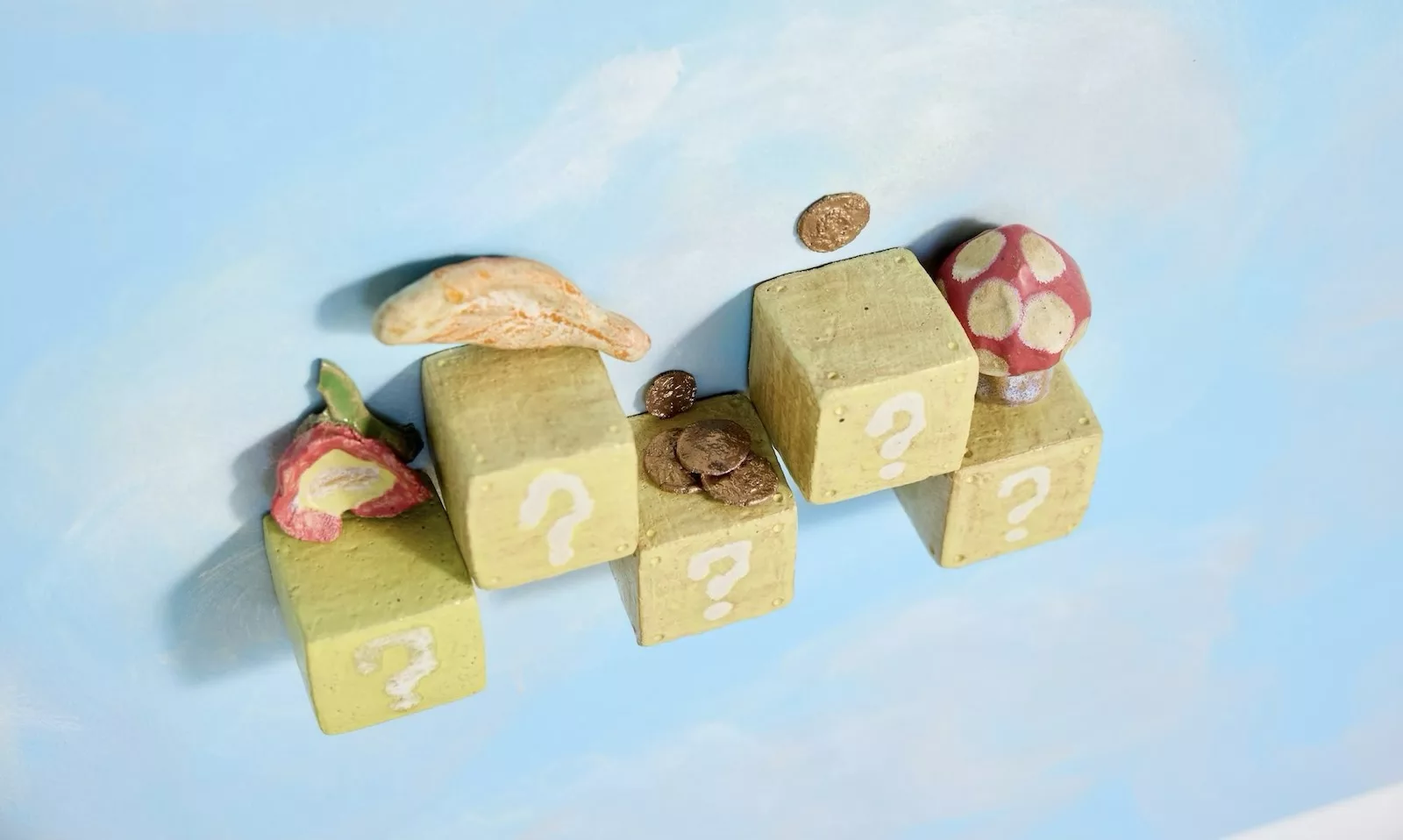
Since the pandemic, I have found myself drifting away from my fellow humans, further into a digital realm that is designed to trick us into thinking that we’re still close to one another. On our quest for connection, many of us have found ourselves lost in video games. The problem is, oftentimes these video games are solitary activities, placing us in imaginary worlds with imaginary people, even though real ones exist so close at hand; torn from our grasp by the sleek, intangible world of screens. Digital motifs—made familiar to many through video games—take on a new fragility when rendered in ceramic. “Question Blocks” references objects from The Super Mario video game series, and shows the artist’s hand. The inherent vulnerability of the material softens the cleanliness often associated with these digital symbols. This contrast challenges the distinction between the impermanent digital world and the enduring material world.
Nelson crafts an immersive space through rich textures and detailed compositions that evoke a dreamlike environment.
The larger standing sculptures are displayed throughout the space on varying heights of carefully crafted pillar-like pedestals. Small details can easily be overlooked if you move quickly, like the ceramic banana peel sitting on the window sill, glittering in the sunlight. The materiality of clay grounds abstract concepts, transforming them into something immediate and tangible; this physicality invites direct interaction with the work, suggesting that we engage with their meaning slowly and sensorially.
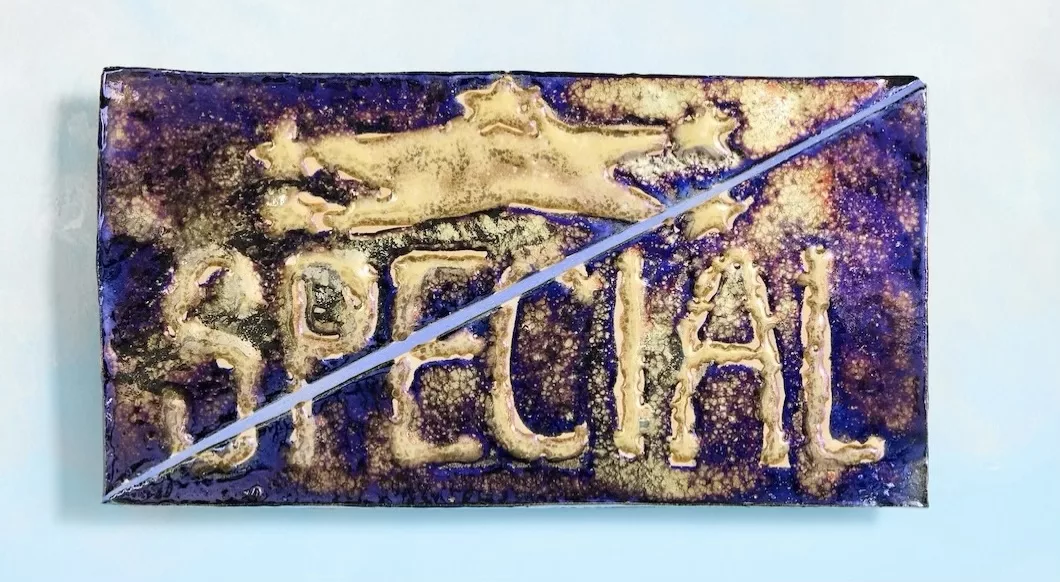
The artist explores cultural identity and economic forces in “Special Star,” which stands out on the wall, the glaze offering a sparkling sequin-like quality, and a stark slash through the word and imagery. In video games, we often play as “the chosen one,” but here in this world, we are not special. We are guided by our given circumstances, dreaming that, like in a video game, maybe our story amounts to more than what meets the eye.
This exhibition underscores the potential of ceramics for meaningful engagement in a real world saturated with digital media. Nelson’s works capture the anxieties and aspirations of our time. By confronting the audience with the fragility of clay and the deep cultural and societal questions embedded in her art, Nelson challenges us to rethink how art can be both reflective and playful.
‘Liisa Nelson: Dreams’ is on view January 15th through March 30th, 2025 at The Clay Studio, 1425 N American St, Philadelphia, PA 19122
About the author
Originally from the enchanting state of New Mexico, Magdalene Sanchez is a Fine Arts Junior at Moore College of Art and Design. Currently their focus is on what it means to memorialize, showing both what is intuitive as well as nuanced truths beneath the surface of memory. Sanchez currently lives and studies in Philadelphia, PA.
This post is part of a collaborative project between Artblog and Chenoa Baker’s Writing for Art and Design class at Moore College of Art and Design.


